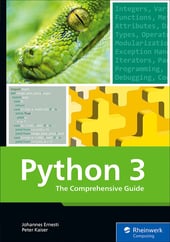While machine learning has a rather cinematic feel around it, it is an authentic technology and not as impenetrable as you would believe.
A search engine, tagging a buddy in a Facebook photo, or discovering less spam in your email inbox are examples of machine learning-based technologies.... Nearly every industry uses machine learning in some form these days, and the technology is expanding daily. Nowadays, many people are interested in mastering machine learning. But many newbies are turned off by the intimidating, bottom-up curriculum that most machine learning teachers advocate.
If you are into learning machine learning, I recommend learning to code with Python. But what comes alongside and after this skill? Let’s take a look!
What Is Machine Learning?
Making machines learn, think, and act like humans is what machine learning is all about. It is the process of allowing machines to learn from their past mistakes and gradually increase the accuracy of their outputs.
Anyone would find it challenging to program every project, right? However, with machine learning, you don't have to program every task; instead, the computer creates an algorithm based on the work and data at hand.
In other words, machine learning enables software to understand data without the aid of a programmer. It becomes more adept at comprehending data over time, producing more precise predictive models.
Machine learning software can be considered a highly specialized subset of artificial intelligence that excels at specific tasks. The fact that there are no limitations on programming languages when it comes to implementation is one benefit of machine learning.
You might wish to pick a robust, low-level language because machine learning is frequently used to process massive amounts of data. If you are starting fresh, Python could be a great place to start.
Python for Machine Learning
Python is the most popular programming language used for machine learning projects. But why? Why does Python-based machine learning exist? Let's try to understand.
In contrast to other object-oriented languages, Python is a simple programming language to work with. It facilitates the construction of a wide range of machine learning models and algorithms, and is used for data mining and data analysis. It is renowned for its readability and provides platform independence, allowing you to reuse the same code across several machines with no modifications. It is the ideal language for machine learning because of all these factors.
The greatest asset of Python, however, is its adaptability. Developers can adapt their code to almost any issue thanks to the hundreds of libraries that are easily downloadable. Python provides all the tools developers need to let them immediately validate their algorithms. Now that we have understood the basics, let’s move on to the main question: “How do you start?”
8 Ways to Start a Machine Learning Project with Python
It can be intimidating to begin tinkering around with machine learning using Python. There's much to handle. To make it simple, let’s break it down into some simpler tasks.
1 Get Acquainted with Python
Start learning Python if you are a total newbie and have no prior experience with programming. If you are already familiar with Python, this step isn’t as important.
Why do you need to know Python? Because implementation is the key to machine learning. And you can't implement anything if you don't know how to program. At this stage, all you need to learn to code in Python is the basics. You can check out a number of resources, from YouTube videos and tutorials to full-length comprehensive Python guides.
2 Brush Up On Math
Understanding the operation of machine learning and its algorithms requires a working knowledge of mathematics. You should have a basic understanding of these mathematical concepts:
- Statistics and probability
- Matrices
- Linear algebra
- Calculus
Like in point one, you can also look online for classes on these topics to see if there are any interesting math classes available to brush you up on your skills.
3 Get Started with Machine Learning Concepts
Once you’ve learned some Python and advanced math, it's time to become familiar with machine learning concepts. The fundamentals of machine learning, including types of algorithms (supervised, unsupervised, semi-supervised, and reinforcement learning), details of each method, and other ideas must be learned in this step.
4 Learn About Data Science Tools
At this point, it’s time to put what you have learned about Python and machine learning into practice. Use data science tools like Jupyter and Anaconda for this. All you need to do is get familiarized with these tools and recognize the purpose of using them.
5 Explore Analysis, Manipulation, and Visualization
It's time to learn how to handle data at this point. Why? Because data is a prerequisite for creating a machine learning model. You must be educated about data manipulation, analysis, and visualization. Below, I list three tools that can help you with this.
- Pandas: Pandas is a free software program used for manipulating and analyzing data. You can work with data frames with the aid of pandas. DataFrames, which are identical to Excel files in every way.
- NumPy: You can conduct numerical operations on data with the aid of NumPy. With this tool, turn any data into numbers when it’s not already in numeric form.
- Matplotlib: You can create graphs and charts using Matplotlib to represent your findings. Default results come in tabular form and this can be challenging to comprehend. It is crucial to graph the results. Matplotlib will help you with that.
6 Utilize Scikit-learn to Discover Algorithms
Once you have data and have altered it in some form, it's time to look for patterns. Several helpful machine learning algorithms are incorporated into the scikit-learn Python package and are available for use.
To assess how effectively you learn the algorithm, the package has various useful features. Focus on understanding the types of machine learning issues, including classification and regression, and the ideal techniques for solving them. Don't worry about fully comprehending each algorithm just yet; focus on learning how to use them.
7 Go Deeper with Deep Learning
You will at this point have sufficient machine learning skills, but an understanding of deep learning is crucial. Why? Because small datasets are perfectly suitable for machine learning. Large datasets, however, cause machine learning algorithms to fail. Deep learning is therefore needed for these datasets, as they produce flawless outcomes.
8 Build Projects
The last step is to develop project-building skills. You will quickly forget everything you learned if you don't put any of it to use on practical projects. Concepts can be memorized, credentials can be obtained, and many assessments can be taken. However, you don't learn until you begin to build.
Conclusion
Through many use cases, machine learning has become ingrained in our daily lives. This post told you how to get started with machine learning by using Python. If you’re on a time crunch and need a project built by professionals, you should consider working with a Python development company.






Comments